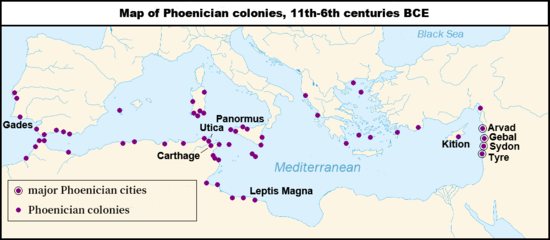Tel Shikmona
Tel Shikmona (Šiqmônah, Hebrew: תל שִׁקְמוֹנָה, Tell as-Samakh), also spelt Sycamine,[1] is an ancient tell (mound) situated near the sea coast on the modern city of Haifa, Israel, just south of the Israeli National Institute of Oceanography.
תל שִׁקְמוֹנָה | |
 Shown within Israel | |
| Location | |
|---|---|
| Region | Haifa |
| Coordinates | 32°49′30″N 34°57′19″E |
History
Josephus in his Antiquities mentions Shikmona (Sycamine) as being a place where ships could be brought to harbor, and where Ptolemy Lathyrus, during an incursion in the country, had brought his army ashore.[2] Strabo mentions the site (Sycaminopolis) as being no more than a ruin in his own day.[3] The Mishnah (Demai 1:1), compiled in 189 CE, mentions the region of Shikmona as being renowned for its cultivated variety of jujubes (Hebrew: rīmīn). The Bordeaux pilgrim in 333 CE passed through Sycaminon while traveling through the Holy Land.[4]
Archaeology
Excavation history
The main archaeological excavations conducted at the tell and in the Byzantine city south of it, were carried out by the archaeologist J. Elgavish in the 1960s-70s on behalf of the Department of Museums, Municipality of Haifa.
Salvage excavations were conducted in the 1990s by the Israel Antiquities Authority (IAA) and concentrated in the eastern part of the Byzantine city, west of the Carmel Mountain slopes, were the city's necropolis is. In 2010–2011 a new series of excavation seasons was conducted by a team from the Zinman Institute of Archaeology at the University of Haifa, headed by Dr. Michael Eisenberg with Dr. Shay Bar directing the excavations on the tell itself. The goals of the project were to re-expose excavated archaeological complexes south and east of the tell previously excavated by Elgavish, expand those areas and undertake extensive conservation work in order to preserve the antiquities and present them to the public as part of Shikmona Public Park. The work also aimed to study the stratification of the tell and create a precise chronological framework.[5][6]
Findings
The remains on the tell date from the Late Bronze Age to the Late Byzantine period. The lower city, east and mainly south of the tell, is dated to the Late Roman period-Byzantine period. No remains have been found so far dating to the Early Arab period, leading the archaeologists to conclude that Shikmona was abandoned before the 7th century CE.
Tel Shikmona has yielded various types of sherds, the most common of which belonging to the red-slipped plates and bowls (Eastern sigillata A) made on the Phoenician coast during the 1st century CE.[7]
Nature reserve and national park
Shikmona was declared a 1677-dunam nature reserve in 2008. A small area (73 dunams) was declared a national park, as well.[8]
References
- Josephus, Antiquities 13.12.3.
- Josephus, Antiquities 13.12.3. Cf. Samuel Klein, Sefer Ha-Yishuv, vol. 1, Bialik Institute: Jerusalem 1939, p. 155, who identifies Sycamine with Shikmona near Old Haifa.
- Strabo's Geography 16.2.27.
- "Itinerary from Bordeaux to Jerusalem - 'The Bordeaux Pilgrim' (333 AD)", trans. by Aubrey Stewart, London 1887, pub. in: Palestine Pilgrim's Text Society, vol. 1, p. 43
- "Zinman Institute of Archaeology Shikmona Archaeological Project". Zinman Institute of Archaeology. Retrieved 2017-04-17.
- "Zinman Institute of Archaeology Shikmona Archaeological Project poster" (PDF). Zinman Institute of Archaeology. Retrieved 2017-04-17.
- Andrea M. Berlin, "Jewish Life Before the Revolt: The Archaeological Evidence", in: Journal for the Study of Judaism in the Persian, Hellenistic, and Roman Period, vol. 36, no. 4 (2005), p. 445.
- "List of National Parks and Nature Reserves" (PDF) (in Hebrew). Israel Nature and Parks Authority. Archived from the original (PDF) on 2009-10-07. Retrieved 2010-09-27.
